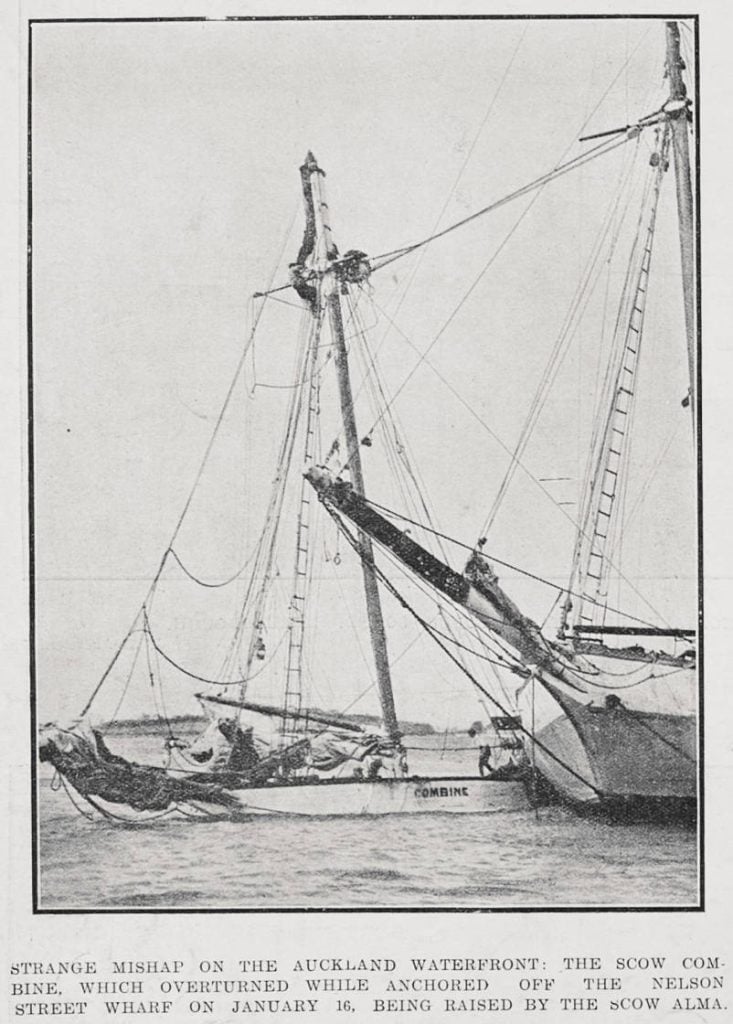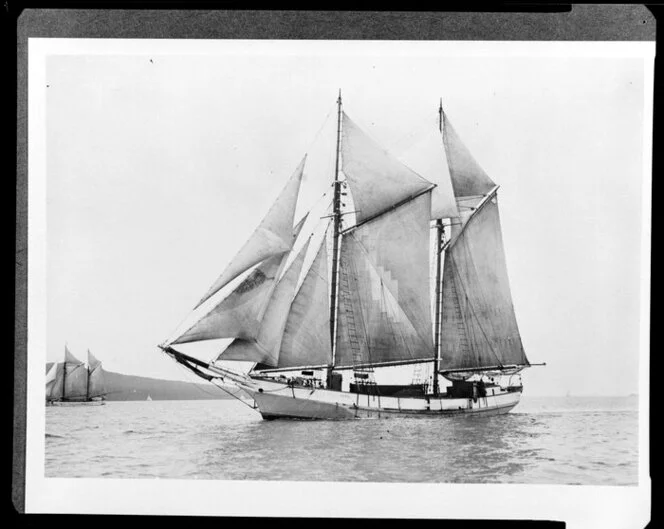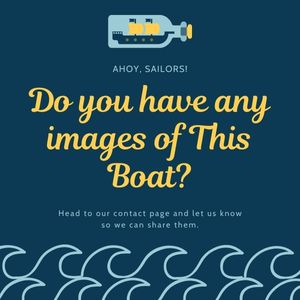Build Date
1902
Boat Builder
George Niccol
Length
79ft 6inches/ 24.26m
Beam
25ft 6 inches/ .80m
Alma’s Early Years
Two masted fore and aft schooner rigged deck scow built in Auckland by George Niccol in 1902. She was built out of kauri salvaged from a bridge north of Auckland. They used full-length planks to build the hull with the belief this would make the boat more robust.
Alma was built to be a coastal cargo carrier but she had no hold so all the cargo needed to be carried on the deck. Her carrying capacity was 90 to 100 tons and she was used to transport sand, shingle, timber, coal, cement, livestock, Kauri gum, explosives, trucks, tractors, fertiliser and drilling equipment. Most of which had to be manually loaded on board. This included wheeling wheelbarrows of sand across planks onto the deck when the tide was right.
Most of her time was spent in the north around Opotiki where she needed a crew of five including a skipper, two AB’s, an engineer and a cook. Although one of her manifests shows Alma travelled around Nelson and even Dunedin. There are photos of Alma in full sailing rig competing in Auckland scow regatta’s. The scows met every year at Waitemata Harbour for these competitions which were fiercely competitive. So much so that some scows would only just make the race and would still have cargo on board.

Weight
63.02 tons
Draft
3ft 6 inches/ 1.09m

Alma’s Owners and Her Upgrades Pre-1980s
Alma’s first owner is recorded as Ada Beatrice Niccol but J J Craig Ltd owned her the longest from 1927 to 1959. He used Alma to run cargo up and down the Northland coast including a regular three times a week trip from Portland to Auckland transporting cement.
In 1924 Alma had her sails removed and was fitted with a 45hp single Fairbanks Morse diesel engine. Its said that Alma was the first scow to be fitted with a engine. This wouldn’t be her only engine change though. J J Craig Ltd updated Almas’s engines three times during their ownership. In 1937 the Fairbanks Morse engine was replaced with a 60hp Kelvin on the port side and then in 1946 this was matched with another 60hp Kelvin on her starboard side. These were updated again in 1950 with 66hp Kelvins, one on each side.
J J Craig Ltd completed many upgrades in their time. They built a wheelhouse after World War Two to protect the skipper from the weather. They also removed the mizzen mast and shortened the fore mast to take the nav lights and lifting gear in the 1950s.
Alma’s previous engineer Frank Aspden purchased Alma in 1959 and added fins to her stern as well as replacing the sand grab with a pump. Aspden’s ownership didn’t last long though as another former Alma worker, Keith Wright purchased her in 1962. Wright used Alma to transport glass sand from Parengarenga and Ocean Beach to Whangarei glass works. Wright replaced Alma’s foremast with a dredge crane.
A History of New Zealand Scows and their Trades recalls that Alma was well maintained and tidy to the point that if you were offered the opportunity to go in the engine room you would also be invited to take your shoes off!
The Harbour Transport Ltd company of Tauranga purchased Alma in 1969 to work in the Tauranga Harbour. They fitted her with a 20 ton crane and sand bin to aid in her work pumping and carrying sand.
Alma’s Restoration
Dr Paul and Liz Bowker purchased Alma in 1987 with the plan to return Alma to a two masted gaff-rigged sailing scow. Graeme Darroch, great-grandson of the prolific scow builder Davey Darroch, also became a co-owner. They removed the crane and sand bin installed by Harbour Transport Ltd and shorted her bowsprit. Darroch took Alma to his Hokianga Harbour property where he built a dry dock to work on the boat. He removed rot, replaced deck beams, installed a new bowsprit, rebuilt the steering gear and refastened and resheathed the hull.
They licensed Alma to carry 90 passengers within the harbour or rivers and they offered BBQ’s, cruises, fishing, sightseeing and educational trips. This work was supported by the ‘Friends of Alma’ group who helped cover the costs and the work of this extensive restoration. But not enough people used this charter business and they ended up thousands of dollars in debt. Darroch is said to have spent $400,000 on restoration work and as such could not afford to give her away to a trust. So in May 2007 Alma was sold to Geoff Benge and three months of work to recondition her engines started. When the engines were good to go and she was considered seaworthy they motored Alma from Hokianga Harbour to Waitapu near Takaka. This would be a three and half days adventure. Benge plans to continue the restoration and reinstate Alma’s sails. Benge has installed Alma on a large steel trolley and has set to work on continuing the restoration. This has included a new roomy cabin including a kitchen and awning area that covers 7.8m of the deck space.
Alma was registered in London as a World Heritage Ship as she is one of only three scows from the 1873-1925 era that was still afloat in the 1990’s and she is believed to be the only deck scow still afloat today.

References
To research Alma we used the book A History of New Zealand Scows and their Trades, Stuff and the New Zealand Herald.
Related Posts
Kohi – 91ft. Scow with a long trading history. After sinking in the 1960s Kohi became a floating Crayfish freezer.
Orini – 86 feet George Niccol scow built in 1918 for the East Coast Co-op Freezing Co. Ltd.
Pearl Kasper – 77ft George Niccol Blind Bay Hooker.
MV Tuhoe – 97ft George Niccol trading Scow used during World War Two by the US Army.

On my return to NZ in 2000 sans Master V Skippers ticket from WA, I pursued the scows Jane Gifford and then the Alma as the last two afloat. I traveled to the Hokianga to meet Alma and Graham Darroch and learned to steer her up and down the river, no mean feat, as the river was narrow for her length. Startled passengers would watch as I lept into the air and came down with a hand upon her huge wheel with my weight behind it to turn her. It was a workout for sure. I would love to see her now.